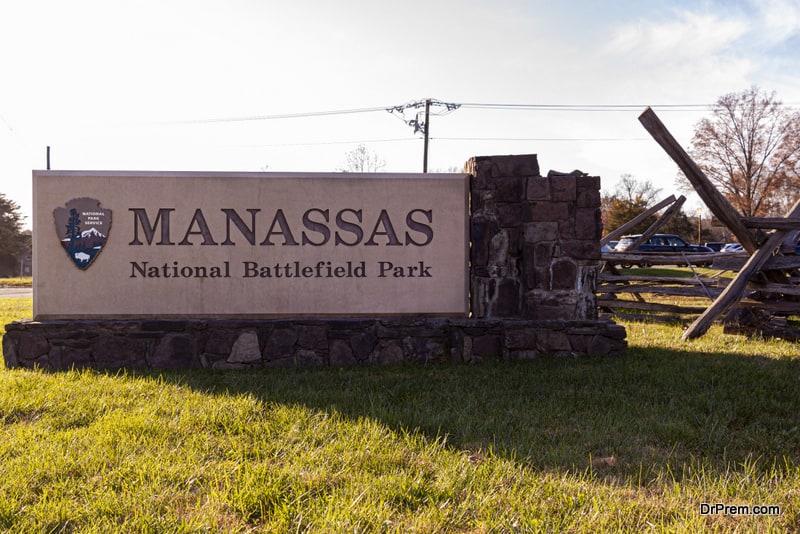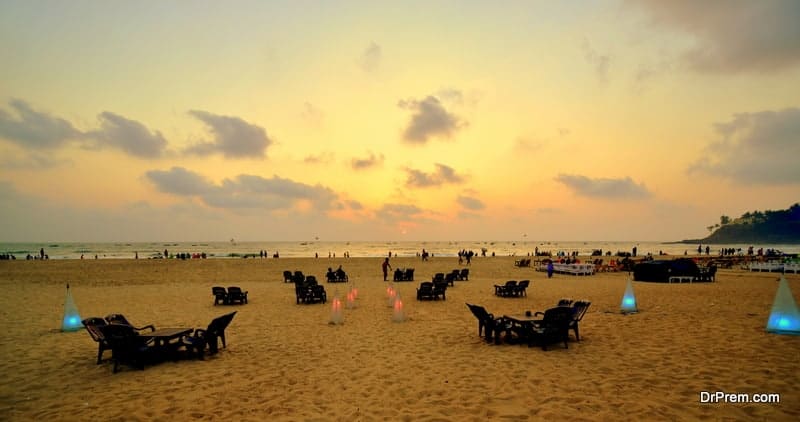War tourism is travelling to battle fields and frontiers where the traces of combat between the rival troops are still fresh as if the smell of cordite has just fired off a gun. War sites lure a section of tourists who are turned on by the adventure and adrenaline pumped thrill drawn from a war tourism site.
Despite the political turmoil, the clash of interests of nations with conflicting ideology and eventually the spray of ammunitions and explosions and the consequent loss of life and property and the grief associated a place of battle has a tremendous appeal on its own right. It is here where the fates of the nations had been decided. The victor emerges with its head held high and the loser gets lost in gloom and subjugates to the self-declared master!
In many war-torn lands, development is in progress. Bomb pits have been turned into fish ponds. In many places, the devastated buildings and structures razed to the ground altogether have been preserved intact with modern civilization grown around. This certainly is an attraction in contrast with ghostly towns beaten by enemy assaults stand amid a strikingly contrasting and pulsating modernity!
Time and again the consequences of strife and bloodbath no matter how ugly and embarrassing it have been the tourists pour in waves making war tourism a powerful niche cutting a secured slot in tourism industry.
In this guide, you will read about:
A Complete Guide to War Tourism by Dr Prem – Definition, History, Components, Planning Tips and Destinations
-
What constitutes war tourism?
-
History of war tourism
-
Key drivers of war tourism
-
Why war tourism matters?
-
Is war tourism for you?
-
Essential components in war tourism
-
Activities in war tourism
-
How to get more information on war tourism
-
Importance of planning in war tourism
-
Budgeting in war tourism
-
Preparations for war tourism
-
Best practices to be implemented in war tourism
-
Precautions and prevention in war tourism
-
Dos and don’ts in war tourism
-
Things to do post war tourism
-
Countries promoting war tourism
-
The USA
-
Germany
-
Kenya
-
South Africa
-
Vietnam
-
Top 10 War Tourism Destinations across the globe
-
Majuba Hills, South Africa
-
Fort Sumter National Monument, Charleston, South Carolina
-
Manassas National Battlefield Park, Virginia
-
Crimean Battlefields
-
Dresden, Germany
-
War fields of Vietnam
-
Afghan War fields
-
Libya, North Africa
-
Korean War memorial and museum, Seoul
-
Waterloo, Belgium
-
6 Ways to Explore War Tourism in India
-
Kohima War Cemetery
-
Veer Yatra
-
Tawang War Memorial
-
Victory at Sea Memorial
-
Tanot Mata Temple, Longewala
-
Jaisalmer War Museum
What constitutes war tourism?
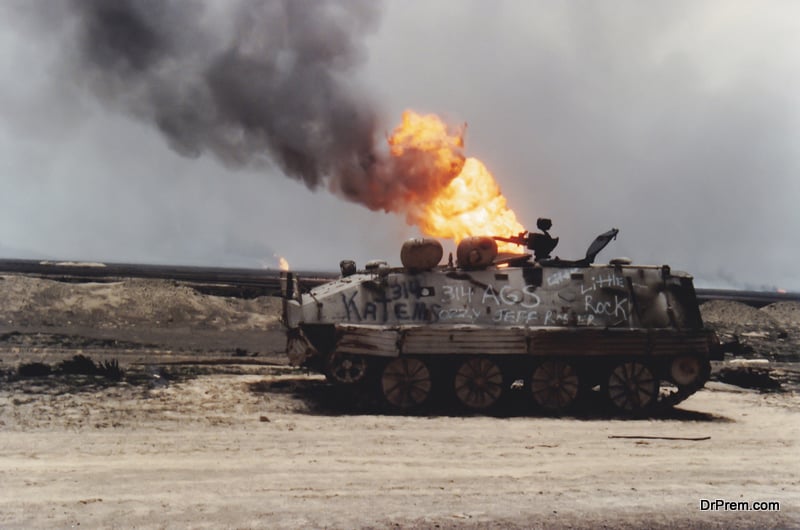
Battle fields are historically significant, politically arousing and strategically offering a field of study in the realm of military science and engineering. The charred greenery and sight of the armory debris, shrapnel, and exploded fragments of mines, grenades and warheads supply enough fodder to the adventure freaks having an enormous appetite for war torn zones.
Battles and wars of different magnitude and location involving different countries have been fought across the world. The results are known and their impact has left a trail of bloodshed and gun smoke that the tourist can hardly able to resist the temptation to make a visit.
The battlefields of American Civil War, the Crimean War, the Waterloo, the Korean War, the desert warfare in Northern Sahara, Dresden the city in Germany suffering most air assaults, the Bangladesh -Pakistan war and the Gulf war in the recent times have been major grounds inspiring war tourism among the tourists.
Tourists with a good grip on war strategies quite often look for details. The geographical feature and the terrain, the landmarks, the forests, the deserts, the gorges and the hills that might have been deciding factors for a nation to win and it’s rival to lose. Besides guns and ammunitions, the tactics applied plays an important role in delivering the outcome.
The position of the army along the terrain matters a lot. The winner had successfully employed the topography to his advantage in which the vanquished have failed. These technical details and a lot more entice the war tourism enthusiasts to plan a visit to the battle ravaged grounds, and the kick he gets from the scene is powerful often inspiring repeat visits.
War tourism is a bit out of the way departure from other conventional forms of tourism. The usual niche tourism sector lays emphasis on the scenic beauties, cuisine and cultural marvel. Whereas, here the focus is on death and destruction in the backdrop of a conflicting political scenario and exposure to a site dotted with bomb craters, burnt woodland and apparently harmless grounds beneath where lethal mines and other ammunitions might be lying dormant to erupt someday.
The danger of stepping over a mine is always there, and the tourist is very well aware of the devastating results. However, his drive for war tourism is strong enough for these threats to deter his enterprise.
History of war tourism
War tourism is not a recent phenomenon. It is the man’s desire that has driven him to battlefields not as a soldier, but as a spectator to watch the aftermath which is now a history. Early visits to battlefields are illustrated with the burning example of Mary Seacole, the philanthropist from the Caribbean. Born in 1805 in the Caribbean Island of Jamaica, she was a lady fired with the zeal of helping the wounded British soldiers in the Crimean war grounds.
The span of the battle lasted for two years running from 1854 to 1856. The intensity of the battle was tumultuous. Nevertheless, it did not deter the spirit of this great lady from fulfilling her noble mission. Neither did discouragements and criticism born out of racial discrimination force her lose her vision and grit.
However, this visit was way apart from just hitting upon a war tourism site for the sake of thrill and pleasure. It was something much noble and humanitarian. It was a selfless mission.
Another visit by a lady to the bloodied battlefield is exemplified by Florence Nightingale way back in the 18th Century. Born British in 1820, Florence was trained as a statistician and by profession she took to social reforms and later developed the noble profession of nursing.
In the Crimean battlefields, she helped and nursed the injured soldiers with care and passion. She was nicknamed ‘Lady with the lamp’ for her habit of going rounds with a lamp in the camps of wounded soldiers attending their medical needs.
She was lauded to the sky for her charity, service and sacrifices and will remain as a legendary visit by a civilian in the ravaged Crimean battleground with a strong and undivided focus on serving war torn humanity with love and compassion. Early viewership of American civil wars has its records as far back as in the eighteenth century. Some of the American war fields visited by tourists even in early days are as follows:
Manassas Nation battlefield, Virginia:
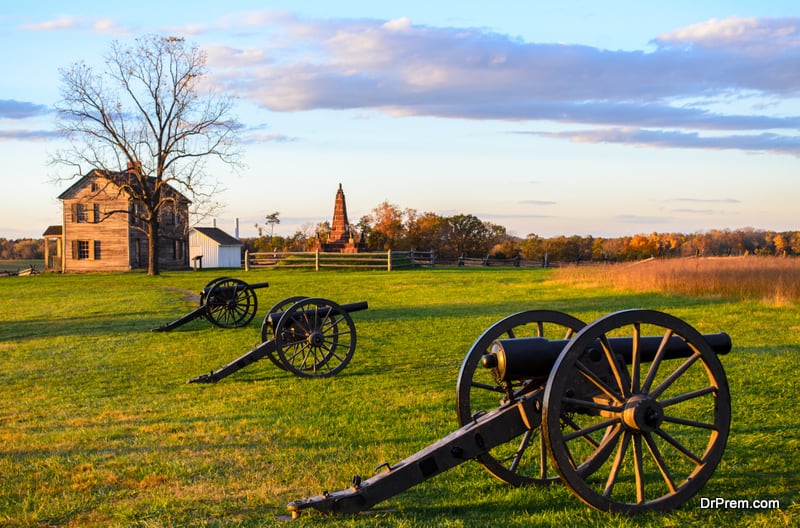
Back in 1861, viewers and news journalists raced with each other for a first rated vision of the first chief battle fought between Union and Confederate soldiers at Manssas. Prior to the battle was waged, a majority of the Americans conceived the notion that the war would barely be a brief scuffle.
On the contrary, the battle turned out blood spattered and horrible. Almost thousand soldiers lost their lives and it was quite a shocking figure those days. The nation was stunned and it was hard to swallow and comprehend that the impact was so devastating leading to loss of human lives on a massive scale.
Fort Donelson National Battlefield, Tennessee:
Back in February 1862, Union General Ulysses S Grant emerged victorious at Fort Donelson where he was designated “Unconditional Surrender”. The African American slaves whose pain and humiliation had built up a hostile sentiment within rejoiced the victory and gathered in large numbers around the Fort to mark the celebration.
Drive for visiting war sites with a motive and inquisitiveness fired by thrill and information was always in our blood. It is ancient. The battles and strife provide an ideal platform to feed this desire of drawing enough kick and achieve gratification.
Battles had a crucial role in altering the course of civilization down the ages. Wherever and whenever conflicts surfaced between nations over political, social and economic interests, the solution came in the shape of gory battles and wars.
Throughout the ancient Rome, Mesopotamian, Egyptian and Chinese civilizations, strife, rebellions and suppression of the same with a heavy hand shaped the destiny of mankind. Not only the armed troops, but the civilians and spectators were also a part of the macabre spectacle.
However, in those days battles were mainly fought in the designated frontiers and civilians took interest in visiting the aftermath and celebrating the win. With time rolling over, the attacks shifted towards cities and towns and the potential target was civilization. Here, the spectators and civilians no longer were safe but suffered the wreckage caused by war.
Key drivers of war tourism
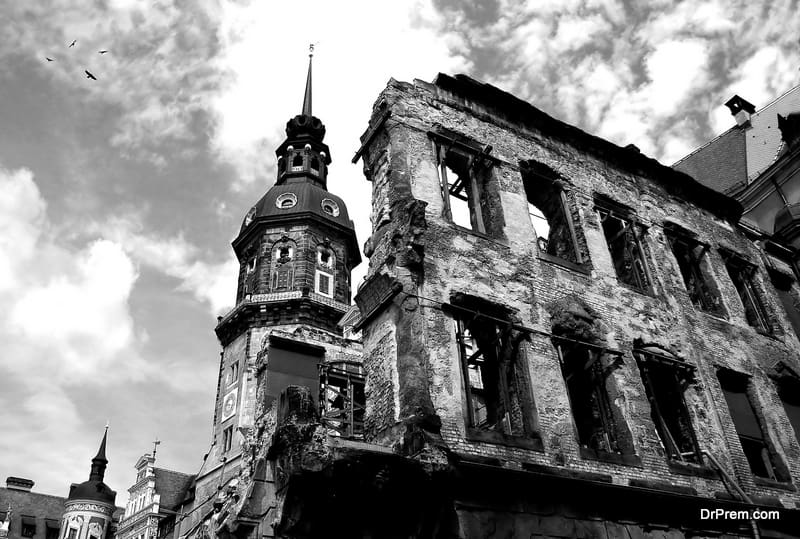
There has to be some terrific reasons behind the success of war tourism. What is it that drives tourists in large numbers to battle fields and frontiers once stained with human blood, polluted with gun smoke and the air filled with the cries of victory and woes of defeat? The battle ground itself is a big tourist attraction.
However, certain key features and the measures employed to make it look way different from an ordinary ground is a key driver. The tourists come here to look for thrill and the place should do enough to stand apart from the rest.
The city of Dresden located in Saxony in Germany had lost 25000 innocent civilians during the end of World War II. The combined air raids by the allied British and American bombers have ruined the city to mounds of dust and rubble. Germany suffered heavy losses and this blood bathed history have been a key driver arousing the interest of tourists. They come and take a look at a city that earned a place in the Guinness book as a record breaker for being the most bombed city ever!
In some towns where war has wreaked havoc on life and property, ruined structures have been preserved till date intact in the state of devastation. Under the impact of intense heat steel structural have been drawn out of shape. Disfigured concrete columns and buildings still stand today and convey us the grim reminder of the sheer scale of slaughter and destruction that went past.
They stand in a naked contrast with the modernity that grew around and flew past entrapping a mass of charred relic torn down by a spray of cannon balls, modern day missiles and shattered by rampant bombings.These relics are traces and proofs of history drenched in blood. Power hungry top brass of rival nations devise methods, tactics and strategies.
The troops execute the plans and die in thousands along with the poor civilians, etching out a destiny for the masters and the vanquished. These vestiges of war and a reflection back at history serves as key driving inputs making war tourism a powerful and interesting alcove in the global tourism trade.
More pronounced the disparity between a modern city and its ghostly past ruined by war, the stronger is the impetus that allures an exodus of tourists to come and explore the dangerous, thrilling and scorched battlefields and rest back in the luxury of hotel suite perhaps watching some television channel over a glass of martini. The infrastructural set up should be world class ensuring comfort and class drawing the tourist to explore the war tourism site who will encourage others to do the same.
The government’s patronage towards war tourism is an important key driver. This pertains to the upkeep of the sites employing the latest know how. The sites should look like a fierce battle that had been fought here bringing a flash back to the mind of tourist the sheer magnitude of destruction and loss of lives that ensued.
The walk down the memory lane is purely on an imaginary plane, but the ambience and surroundings should be realistic enough to conjure up such a feeling. This fashioned atmosphere is certainly a commanding key driver for war tourism.
The level of awareness, education and interests of tourists in warfare, battlefields, arms and ammunitions and combat strategies are also the key drivers of war tourism. A tourist devoid of this knack would hardly find any attraction towards visiting battlefields. So the quality of the tourist matters in a big way.
Why war tourism matters?
The fact has been firmly established that war tourism leads to exchange of benefits both material and intellectual. The financial benefits flowing from visiting tourists are of great importance for sustaining war tourism. Making war tourism sites as a consumer product presentable to the prospective customer needs constant patronage by the government and preservation by the tourism department.
Methods of preservation need technological support, which is quite an expensive affair. Installation of museums for information support and interesting exhibits multiplies the appeal of war tourism and may run into an outlay of several millions of dollars or Euros for that matter. Now from where would the money come from?
If the tourist sits back home, the concept of war tourism would be a flop dream. No money would flow in and the museum exhibits would collect dust not to speak of investment in new projects, and the war tourism site would be lost into oblivion altogether. More importantly, the beneficiaries whose source of bread and butter depends on war tourism will suffer.
The reality that war tourism matters, becomes crystal clear if we watch the cash and benefit flow cycle. This cycle should run on a continuous rhythm, and bottlenecks if collected must be identified and removed pronto. This cycle has users at different important locations and interaction points.
Exchange of benefits for services takes place at these locations in entire war tourism map economics. The money spend by the customers directly hits the cash boxes of the hotels and resorts, restaurants and eateries, local business chains selling war souvenirs and local merchandise.
Money coming from tourists as entry fee to the war memorials, museums and legendary battlegrounds are collected in the respective treasuries. Now why the tourists would pay the money unless he gets his money’s worth of satisfaction from the tour?
Then again the question of the quality of services rendered by the hotels and local business and the upkeep and exhibition worthiness of the war sites and memorials come up, which depends heavily on the flow of money to enhance the quality of products for sale to the consumer. Now it is a pretty closed loop with the tourist and his desire to spend standing as a fulcrum.
The injection of more money into the cycle would support war tourism to run at a roaring pace. The quality of services would enhance the financial status of locals. There will be an overall economic development of the region at one end and on the other the customer will stay happy with his desires accomplished. This would certainly be a progressive tourism policy bringing in growth and leaving everyone involved happy. This is the primary reason why war tourism matters.
From the academic viewpoint, war tourism supplies rich inputs as well. For the minds bend on war gadgets, military engineering and weapons technology, war tourism sites are very resourceful educational pastures. You get a chance to visualize and listen all the illustrative details of facts, figures, gadgets and gimmicks associated with a specific battle.
This enriches your knowledge in face to face combats and guerilla warfare. The global power game and conflict of interests between warring nations as laid down in history would surface with vivid clarifications. You will definitely realize the quest for adventure and thrill that inspired you to war tourism was only a part of your entire voyage.
A larger portion of your quest would come in the shape of cultivating your intellect in the sophisticated areas of war strategies and technologies, and this is exactly where you start appreciating war tourism.
Is war tourism for you?

War tourism is definitely going to be a unique form of tourism. It is endowed with historical significance, strategic nuances, military science and of course the shrewd political game and ensuing conflicts that eventually culminates into a carnival of slaughter and destruction.
The sites are interest arousing charged with thrill.
There is no dispute in the fact that you may draw in thrill and fun and get a certain level of adrenaline flow provided some measure of risk and danger is linked to your tour destination. War tourism exactly gives you the right kind of feel and thrill, and perhaps you might feel like a reporter sheltering from a spray of bullets or flying splinters from an exploding shell still stuck on the daring mission of supplying battle report from the field itself, live, real and dangerous!
It is exciting enough to make you feel your money on war tourism did not go waste. The battle ground itself is awe inspiring. Countless patriots have laid their lives in a passionate attempt to liberate their native soil from the enemy control. Sometimes they win and sometimes lose.
Sometimes they are remembered as martyrs and in a majority of cases they are lost termed ‘missing in action’, but their contribution is nevertheless much more than just priceless, perhaps words cannot describe the equation of their achievement with the sacrifice that goes with it. The results of these enactments and combats have a deep impact providing you a reason good enough to visit a war tourism site.
Though the saying goes that battles are won in the offices of the Generals and Majors with the officers pouring over maps and plans, the picture remains incomplete without the battlefield factor taken into account. The theoretical line of attack designed by combat experts remains unfinished unless properly implemented in the field. This zone is actually the nucleus of rival contest supported by the latest and most lethal weapons and it is a heart of tourist interest.
War tourism is a great way of escape into a destination where the fate of a nation had been drawn along new avenues of hope and freedom earned after the spillage of ample blood and sweat. This is indeed an enormous feat won through a strong urge of patriotism, tactic, hard training and proficiency in the field of open combat, marksmanship and surprise ambushes.
These are critical factors that appeal a war tourism buff drawing him towards the battlefield to explore how the environment looks like where thousands of valiant men have kissed the ground never to rise again. War tourism has much to offer besides the ecstatic kick achieved from the field itself.
War tourism is immensely educative. It is a storehouse of knowledge. War tourism sites often have museum installations annexed to the battle ground. An assortment of weapons, helmets and army boots, the message transmission gadgets and a host of different military kits and gears on display will certainly fascinate you.
Not only the physical arms and ammunitions, but the piece of literature tagged onto the combat tools would keep you engrossed and surprise you at the destructive power of the weapons as informed. The range of shots, whether air borne or ground to ground or air to sea and the reverse order is illustrated in the most sophisticated manner and clarity.
At times you get a spine chilling feel as if you are watching a deadly snake a foot away ready to strike. You have the jolt of thrill and a justification for the money you spent on war tourism. War tourism has gained a huge popularity and is certainly appealing to engineering and technology inclined tourists.
Essential components of war tourism
War tourism functions around certain key factors which consolidates the idea and makes it a roaring business bringing in substantial revenue to the tourism industry. The tourists make the war tourism moving and dynamic.
The quality of the tourist is instrumental to the success of this travel getaway, and it is a fact that the customer needs a level of background to appreciate all that war tourism has to offer. Education and awareness are important as is the strong inclination towards adventure and thrill. History of legendary warfare is a crucial component supported by underlying causes and the results.
Political awareness and knowledge of global power equation are important inputs that drive tourists towards sites torn by strife. It is worth mentioning that interest shown by tourists in technology and science are important components well. How missiles and projectiles fly and hit a target, the angle of launch, the initial momentum, the path they traverse, the time span that elapse in between, the deadly mix of chemicals and gunpowder used and eventually the devastating power are all important parameters that turns an interested tourist on.
He visits the war zone to try and find an answer to these questions his inquisitive mind hunts for. He nurtures a hope that a visit to war tourism site may expose him to a better access to the technicalities of a full-blown combat and indeed can be classified as fundamental building blocks of war tourism. The attitude of the government and locals, their support and reservations and their effort to preserve a battlefield unspoiled and in original shape are important components too.
Components of war tourism include law and order, administrative machinery and the infrastructural set up of the destination. Good hotels with hospitality as a prime feature are most sought after components that support the success of war tourism.
Existence of the state-of-the-art museums with all documented information, authentic war photographs, exhibits of weapons employed with enough tagged literature highlighting their lethal features are the essential components that the tourists look for beyond what he saw on the field. Without this educative aspect, the glamour of war tourism will lose half of its luster and that is what the museums are for.
They provide information, educate the untrained mind and sharpen the knowledge of those with an inherent exposure to war facts and data. Flow of the cycle of money associated with war tourism is an essential component.
Money flowing in from tourists goes into up gradation of war sites, the local chain of business and the infrastructure. More the money pouring in better will be the progress. Better the progress more tourists will be attracted and the money gets recycled improving the prospect of war tourism.
The close network between the hotels, transportation arrangement, war ravaged site and the ministry of tourism could serve as an effective component improving customer service. This ensures effective coordination of services and guarantees minimum customer complaint and maximization of value the tourist achieves from war tourism site for the amount of money he pays.
War tourism module is also about the tourist and local resident exchange of attitude, common interests and conflicts. When money moves from the tourists to the locals, the scene is peaceful and bright. When interests clash, conflicts arise and the atmosphere turns putrid, popularity of the concept of war tourism declines.
The residents feel the visitors are having a great time viewing the war sites which have been smeared in the blood of their forefathers. The visitors feel the locals are not cooperative enough. This is the bad portion of the component and needs to be eliminated with resolving mistrust and inconsistency of perspective from both the ends.
Activities in war tourism

Tourists gather around the war tourism sites in search of adventure, thrill and information and to achieve their desire the tourist needs to keep himself occupied in different sorts of activities. He runs around the war site wielding his photography kit following the guide, stopping over strategic locations to take snaps of all he finds around interesting and important.
How far the administrative authorities would permit photography is another question. Important activities would include taking prior approval from the authority for photography. Shots taken are important part of your war tourism venture and they will be concrete evidence of all your findings on site.
Selection of the right man as your guide is a fundamental activity. An educated and experienced guide will show you around and explain all the finer details beyond your perception of the war site unaided by a guided tour.
To absorb all of what you see through your camera viewfinder and hear from your guide carry proper voice recording gadgets to ensure nothing goes amiss!You may well experiment with colors and lead carbon enhancing your artistic skills. Sketches of battlefields, arms and military gears will keep you occupied, and when you carry these back home your private art gallery will bring back flashes of fond memories touching various areas of war fields and related items.
Fixing up your accommodation at affordable prices in one activity you need to concentrate with meticulous endeavor and observance checking all the merits and demerits from all possible angles.The proximity of your accommodation from the site and the airport is the most desired combination.
How far you can hit both the targets within the limits of feasibility and your budget depends on how well you manage and is certainly an important activity. A walk through war museums is a didactic activity. You get to learn about the technicalities of the ancient as well as modern day weapons. Full blown designs of guns and their operating mechanisms are illustrated for you to find an ample interest in the subject and draw pleasure from learning.
Wherever you stumble upon some technical details, your guide is there at your service to enlighten you on areas which you fail to comprehend employing your own effort. You may get a little adventurous and walk down the grounds along vast expanse of land where the battles have been fought. Thrills overpower you as at the back of your mind you might envisage a possibility of stamping over a buried and active land mine.
A chilly mix of excitement and a sense of dread overwhelm you running up your spine. But the ecstasy achieved neatly outweighs the perils of your trip. You may take a pair of binoculars and explore the distant horizon from one end of the battlefield and get a pleasant feeling and wished you were a battle hardened General watching over the approaching enemy troops and decide on the line of attack.
What you achieved from this activity is wonderful and it puts you back on a sojourn into an imaginary combat simulated in your mind. It is romantic and yet the draw is irresistible.Common activities like tourists getting engaged in selection of travel agents, getting the flights booked, getting passport and visa formalities done, planning the entire circuit of journey and procurements to be made prior to launching upon his voyage are typical of war tourism as is required in other forms of tourism.
Activities while on war tourism would definitely embrace a show of reverence for the patriots and martyrs. This elevates the position of the tourists in the eyes of the locals and as a result a congenial atmosphere is fostered.
How to get more information on war tourism
Since the dawn of civilization battles had been fought between nations. On a larger scale, we have the wars with massive devastating impacts where a larger number of nations are involved. When economic, political and other interests clash and no amicable solutions come up nations expose their tooth and claws in an attempt to resolve matters through armed assault of the nation or group of nations.
There has been numerous works of classic written by legendary writers revolving around the theme of battles and wars with all the necessary details and anecdotes, which gives the reader a fair idea about the history of such wars and battles. These literary works are perhaps the tourist’s first introduction to what a war or battle is like and the seeds of desire to visit the war-torn sites are planted.
The reader becomes aware of the political reasons that led to these battles and the nations that got involved. Geographical location of the battlefields and location of the blood-spattered frontiers take a clear shape in the mind of the reader who hopes to turn into a battlefield tourist someday! There have been famous literary works and news report coverage on the World Wars, the Crimean war and the Boer war. ‘All quiet on the Western front’ and the ‘Fall of Berlin’ are masterpieces covering both the World Wars.
These texts, journals and war coverage are famous and could be found in libraries. They prepare you mentally for a visit to a battlefield. They update you on authentic pieces of information backed with data and facts that arouse your interest on war tourism. Information based photographs and illustrations of how a bunker looks like or for that matter mountain crevices and green depths of rain forests where the Vietnamese Guerilla troops took shelter, built medical units and devised strategies are all covered in these journals.
The internet feeds you with valuable information on war tourism. Websites dedicated to famous battle fields and efforts made by the ministry of tourism to make these fields attractive as a war tourism destination are all elaborated here. How to reach your desired destination, what kind of hotels and accommodations are available with the transportation network are all highlighted to some depth. Even words of caution with respect to potential threats and hazards are touched.
Personal blogs of veteran tourists visiting war tourism sites are of genuine help, and you get that extra information in the context of peculiarity of a specific case, which would normally not be covered in a general opinion blog concerning war tourism.
The tourist can have more information on war tourism from the ministry of tourism of the concerned country or he may even contact the respective embassy to get an insight into what war tourism is all about.
Like minded tourists bent on war tourism may form groups and camps where there will be a plethora of exchange of experiences and opinions spinning around the concept of war tourism.Exhibitions and trade shows on war tourism make it more lucid and accessible to tourists inculcating interest in them about the subject matter.
War magazines and bulletins are in circulation where field reporters pen down their spine-chilling experiences of great adventures, nail biting ordeals and narrow escapes. These magazines feed you with all the information you are looking for and it comes in a genuinely lively and thrilling detail. Keep your senses alert and get in touch with the circulation of those war periodicals. Besides, websites exist for the war site hotels and the travel agencies dedicated to war tourism. You can be in contact with these websites and shoot your queries.
Importance of planning in war tourism

War tourism needs to be bound within a planning premise well ahead of the time when the tourist sets on his trip. Most important aspect of planning is the financial preparation without which his desire for war tourism would just be a pipe dream. The tourist needs to do serious homework and get to know the ruling tariffs and prices for fixing up his budget on accommodation, transport and food which are the major components of his trip.
A realistic budget with some provision for buffer must be built in your plan horizon to give you a comfortable space for movement and go ahead with your war tourism dream.
Your planning for war tourism starts well ahead to select a time slot when you can afford a trip being away from work.
Next, you need to check if the time slot that you have selected would be perfect to visit the destination so that your trip does not get marred by rainfall but remain sunny. If you plan to travel with a tour operator, your plan should include the right choice of the operator after a thorough appraisal with respect to credentials, past performance records and their pricing policy.
However, a travel agent would take much of the heat off and share the responsibility of planning your trip from a feasible angle. Customized tour packages come at different price ranges and services offered. The choice is yours. They set the entire itinerary for you, which is time bound and customized. You get the quality of service for the money you pay and the entire trip is planned in such a way you have nothing untouched and unexplored as was initially promised before you board your flight back home.
Planning the war tourism trip would also mean keeping the latest information of the currency conversion rate of your destination country as it will entirely affect your expense profile and the money you are going to spend there in exchange of goods and services locally bought. This is fundamental to planning and you will feel its substance every inch you move on your war site venture.
Planning also implies covering the entire war site destination in a proper sequence. Unplanned and chaotic movement would leave you confused, and you may realize to your chagrin that the part of the trip you have completed last should have been at the initial stage of your trip. You need to have your entire program mapped out, and for this you need to devote a substantial magnitude of your time on planning before setting on your trip.
The mode of your local trip, the choice of food, time allotment made to various on tour activities and setting up a neat program entails a comprehensive planning effort helping you pack your trip on a happy note. Your planning exercise would encompass the trip in its entirety covering every segment of the voyage from the beginning till completion.
Micro level planning is advocated. More specific your plan touching every inch of the expedition better is the chance of your trip turning successful. The essence of war tourism planning should result in a feasible blend of achieving the maximum pleasure by visiting as many war tour attractions as possible at a reasonable price within a preset time frame leaving you physically recharged and mentally happy and accomplished.
With the planning tool in hand, the tourist can practically foresee how his war tourism expedition is going to progress. The trip due for completion would take a finite shape. You become aware of rough rides and pitfalls. You devise means to jump over them or to stay clear of them. It becomes your comprehensive guide.
Budgeting in war tourism
Prior to drawing up the war tourism program the estimates of expenses is of prime concern. Your trip is actually dictated by the amount of money you spend. A wrong estimation of your tour budget would mean you will either run short of your actual war trip expense or you have overestimated your expense and this may lead to overspending.
Both are undesirable situations, and the idea is focused on intelligent spending enabling you to achieve the most out of your current trip and save enough money for your future trip. For avoiding unnecessary blockage of funds and also as a safety measure, your first choice is to carry ATM card and get acquainted with the ATM booth operation of the country of your visit. This will enable you to draw your money from the cash machine only when required.
Your budget would naturally take care of your up and down air tickets, accommodation rental, inland transportation costs, food expenses, entry and guide fees at different war locations, memorials and museums plus you need to set aside a buffer fund to tide over unforeseen emergencies. If you are hiring a travel agency, its charges are also to be included as it is obvious.
Your hotel rent and food bill will largely depend on the duration of your stay. So you need to decide carefully on how you are going to stay. Accommodation and food expenses are straight multiples of this factor. You need to keep your eyes open to discounts and rebates offered and grab the opportunity in the first place.
Your camera is an important tool in war tourism. It will give you pleasure as you focus on your target through the view finder and afterwards when you get those priceless photos with the scene of battle fields, war memorials and museums, arms and ammunitions captured. So you need to make provision in your budget for your camera and batteries, chargers and films. DSLR would be an ideal gadget with a slightly high initial investment. However, it will save your photo development cost.
Expenses on purchases of war inspired mementos and models and replicas of warfare gadgets should feature in your budget. Try to form groups, and if you are touring on a cab larger the number of tourists accommodated softer will be the incidence of cab fare expense as it gets shared among your co passengers. Check on the cab fare meter as there is always a chance of the deceitful cab driver tricking you through a tampered meter in the lure of making some extra buck at your expense.
Food is an important area forming a chunk of your entire tour budget. Try to select eateries where the locals gather. These are inexpensive, safe and easy on your bowels. However, cleanliness is an important factor and do not compromise on it. Neither should you allow yourself to a ploy on matter of food. If a restaurant in Afghanistan or in a strife torn African restaurant advertises ‘American or British breakfast,’ simply do not go for it.
It is likely to be expensive and doesn’t worth the hype. It is advisable to have American breakfast in a New York or in a Washington restaurant. Or else you will feel bamboozled and unnecessarily drained of your hard earned money.
Book your flight well in advance to avail the early bird discount and stick to your schedule. If you select a foreign war tourism destination but do not have a passport, the procedural expenses for pass port and visa formalities should be accommodated while drawing up the budget.
Preparations for war tourism
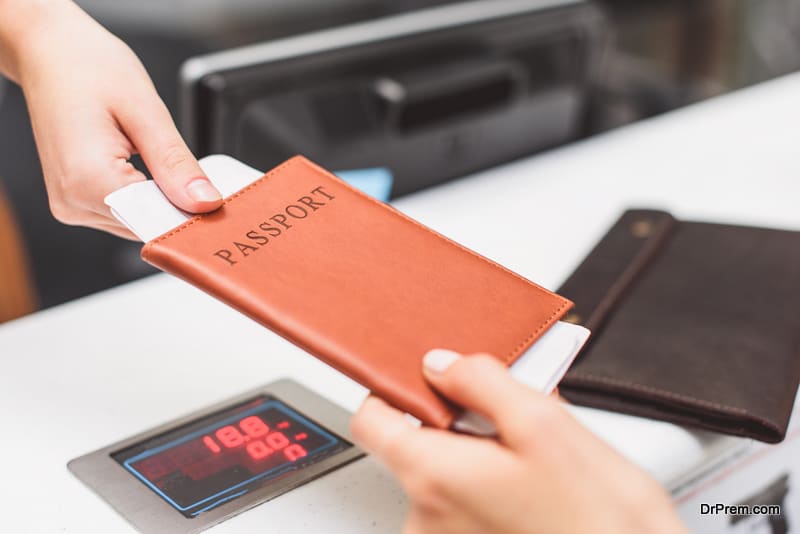
Preparations for war tourism undoubtedly start with gathering of knowledge and the right information. While knowledge enlightens you about all the facts and figures of one or more than one war tourism destinations, right information guides you towards planning and mentally prepares you to set out of your doorsteps.
If you fail in gathering sufficient knowledge, visit to the war tourism may not give you that sense of fulfillment. So it is very important you accumulate enough knowledge about the history of war tourism destination from most reliable sources like books and internet.
After you have set up your mind on the location and have arranged your funds, travel agents, air tickets, visa and passport formalities, you need to pay attention to little tit bits before you leave which is more or less common while travelling. This includes carrying proper luggage, right clothing, journals and magazines if you are an academic person and of course your camera to freeze some awesome shots. You are matured enough to handle the travelling documents carefully that may include your passport and visa if your target is a foreign destination and also accommodation related documents.
Keeping photocopies of valuable documents is a wise act, which may come handy if required. These may sound trifle but negligence in any of these can spoil your trip and land you in danger. Ensure nothing you carry might stop you at the airport security clearance. Apparently harmless objects like decorative knives forming pieces of priceless mementos may detain you at the airport.
Keep sufficient reserves in your bank account to meet the expenses while on tour. Get updates about the availability and functionalities of ATM booths in war zones. You should never wake up to nasty surprises just you were not prudent enough! Always carry your travels agent’s contacts and the phone numbers of their liaison office located at the war tourism destination.
Cancel all commitments and meetings that are due to fall during your absence. Expected couriers and parcels must be detained and neatly stacked at courier office so that you can collect them on return. Your landline telephone and your internet mail box should set up an auto reply that you are away. You will wish to see the streamlined service after you are back from your trip. Therefore, the regular doorstep supply vendors should be given prior intimation of your absence.
Food and drinking water is another important issue that needs to dealt with seriously. Locate a reliable source of food and drinkable water in war sites as many of them are located in barren lands. You should consider carrying food and packaged water to the site, and its distance from your hotel is a vital factor in this regard that merits prior preparation.
If entry to battlefields and war torn sites mean special permission from the embassy or a competent authority, get those formalities done and don’t wait for the last minute rush. Your travel agent and the local guide will help you out on this issue. Keep your cool in situations of great crises while on war tourism. Your mind will work better when calm and help to get over difficult situations.
Get a sturdy pair of boots and it is likely to face a considerable wear and tear depending upon the location of the battlefield. If the terrain is rugged or sandy with pebbles and boulders strewn around, it will be a serious issue with your footwear. Ensure they are able to withstand the stress.If your preparation is good, your entire war tourism will end on a happy note and make you realize the importance of effective preparation prior to an expedition.
Best practices to be implemented in war tourism
Best practices of war tourism would come from multiple sources. The tourist, the ministry of tourism, the local chain of business catering to the needs of the visiting tourist and last but not the least the role of local residents, a responsibility to deliver and a right to enjoy so far as best practices of war tourism is concerned.
The primary focus is put on sustenance of war tourism. Emphasis is laid on upkeep and up gradation of famous war sites. Judicious allocation of money flowing in from the visiting tourists to war site is a requisite of fundamental concern.
Best practices in war tourism are in fact a combination of targets to be achieved. It is clearly defined and closely monitored, and corrective actions initiated no sooner cases are located where the interests of war tourism take a back seat. It is a multi targeted drive where the practices of war tourism are aimed:
(a) At the development of the war sites and battlefields having historical importance.
(b) Up gradation of war memorials and war museums with the latest preservation techniques supported with technical updates.
(c)Display of ammunitions and arms and their chronological employment from ancient battles till modern day missile based warfare is a must. The technical literature explaining the functional details must be organized in a crystal clear tone to draw tourist interest and not to bore them with too much of technicalities and less of humor.
(d) Employment generation based upon the success of war tourism is an important yardstick to measure how fast this niche tourism is expanding. As the periphery of war tourism grows, its quality and volume of service delivery grows as well. More and more tourists are attracted as the promotional efforts are pushed further beyond the usual marketing exercises.
This would mean handling a larger volume of customers, which again needs placement of incumbents at identified key areas to take control of all what the tourists are looking for, and to ensure not a single tourist leaves the war sites, memorials and museums with a tone of dissatisfaction.
If sustenance is the watchword in the best practices for war tourism, the sites must be treated as delicately as possible. There must be an absolute ban on leaving debris and tourist wastes on sites. War tourism grounds are world heritage sites that need to be handled with care and passion as gallons of blood, sweat and tears have gone into the dust shaping the destiny of nations. It has a powerful patriotic attachment and must get its due respect.
The service providers of war tourism must act in coordination with business chain and work out an optimum pricing policy for the customer so that he does not feel cheated and is satisfied with his trip. Customer complaint cell must be revamped with some serious efforts in order to address the problems encountered by the tourist on war tourism.
Museums and war sites need to be staffed with efficient people qualified and experienced enough to handle customers with a wide range of queries as regards war tourism. The guides must make the venture interesting tailored to customer needs.
Best practices of war tourism strive to hit a combined target of keeping customer tourist and the local business groups happy at one end maintaining the tremendous appeal the war zones and battlefield have on the visiting tourists. War tourism is an area of great promises. If handled properly exercising the best practices which should be constructive and goal oriented, war tourism can carry the tourism industry up the way to progress and prosperity.
War tourism sites are as attractive as any other form of tourism with equally attractive features if not more. Best practices make it even more attractive helping it to create a deep and positive impact on the tourists.
Precautions and prevention in war tourism

When you are out on war tourism, certain precautionary steps need to be taken which are imperative. If you plan to take shelter under a travel agent, get yourself doubly assured of the reliability and existence of such a travel agent. Mere contact numbers and a rudimentary website is not enough to establish the credibility of the organizations.
Many deceitful travel agents and tour operators exist with fake identities and insist on online payment or sending payment drafts even when they are yet to discharge an iota of service in your favor. It is too late before their fraudulent motive is located and they are off with your money!
Public opinion polls are important and need to be monitored closely how a specimen of tourists rate a travel agency from all angles and context of fee structure in exchange of services delivered, their quality and speed. Even if the agent is genuine get a thorough detail of services rendered.
If your accommodation is booked through your agent, get a snapshot of the interiors to get a fair idea of the type of accommodation. Similarly, get a total clarification of the price structure and see there are no hidden costs popping up later for which you were not at all prepared.
When selecting your accommodation, never select one in too deep inside an obscure alley. See for the existence of notorious bars in the vicinity. This might make you open to thug assaults. They intentionally provoke you or trap you into a conversation with the ultimate motive of extorting money.
War tourism sites may not be thronged with tourists always. Keep your money and valuables secured, and it is not safe to mix with strangers in an unknown destination. You never know their intentions. Maintain a safe distance.
Never hand over your bank or credit cards to unknown persons for help even if you are in a dire situation. There have been cases where a dummy card had been returned back and the stranger having access to your card and the secret number have robbed your account clean! On similar argument, never disclose your itinerary to a stranger. You might be helping up plot his scheme against you with a motive of financial crime. If you are a female, be extra cautious for obvious reasons.
Most war tourism destinations are located in remote areas where public transport is not accessible. Hire a cab from a reliable authority to visit the place. Your tour agent or local tourist agents can be handy in this case. Again, you need to make sure about their prices and services.
Check whether the war tourism site is safe worthy of a visit. Remote locales are often inhabitated by anti-socials and definitely you will not want to be a prey to their activities while on a trip. Get proper information about the safety and security of the place before you set out.
Study the political situation of the war destination carefully and act accordingly. Many war tourism destinations are bleeding from old wounds even today. Therefore, local people may be quite sensitive. Be very cautious in your actions and words so as not to stir up any heated controversy. If you are barred from visiting the site even due to some seemingly trifle reasons, it would be wise to accept it instead of arguing and pestering.
It may leave you disappointed, but you should be mentally prepared for this. You never know what situation political or social can evoke the sentiments of the locals that can be a hindrance to your war site visit. The locals may look upon you in suspicion and that may not give rise to a pleasant situation.
Dos and don’ts in war tourism
While on war tourism, you need to know certain laws of the land and follow a couple of tips. You may need to refrain from certain acts as well. Observing these ‘dos’ and ‘don’ts’ would stand on your favor in an alien land while ignoring these set of tips might make you feel sorry later.
A war tourism site is a bloodied battleground where nameless soldiers have laid their lives in a fight unto death combat. The driving force may be passion and an intense love for the soil or it may be out of compulsion. Whatever may be the cause the struggle and sacrifice are too big for words to describe.
The tourist should show reverence to those martyrs and see that the busts and statues are not ridiculed. The glimpse of a wonderful statue of a martyr in situ on a battle field may inspire you to touch it. You may be heading for a big mistake drawing a penal action. Keep your emotions under control and ensure if physical contact with busts, statues, weapons and models on display are permissible.
Same caution applies in case of photography. A battle field or a war memorial museum has lots of relics and items tempting you to hit your camera shutter. Stop before you actually shoot! Please figure out all the important regulations concerning photography. Your tour guide might be of help in this regard.
Keep a check on your over enthusiasm while you are running about a battlefield. Foreign objects may draw your attention as does the unusual land features inspiring you to close in on for further investigation. Here you must draw the line and ask your guide whether to go ahead and fulfill your desire fired by adventure.
War tourism sites and battlegrounds may have latent threats endangering life. Land mines, explosives and other lethal devices may be sleeping dormant not rendered inactive. They are just ticking on and answer back viciously to human touch. Traces of life threatening radiations may exist in battlefields.
These are all products of explosion and the consequent collection of debris and poisonous wastes posing serious health hazards. So never be over enthusiastic and have respect for the age old adage “look before you leap”!
The tourists should go for bus rides around the war sites instead of hiring a cab. A cab will be more expensive than a bus. Besides in a bus if you get into any trouble you can expect help from co passengers and fight out the problem with a combined effort. While in a cab you are isolated and can be trapped by the driver. There should be no reason to assume him as a plaster saint carrying a halo of integrity.
Do not open your hotel room door when there is a knock. Gets a glimpse of the man standing on the other side through the magic-eye. You may phone up the reception and ask them to check it out.
Do not give your hotel address and room numbers to outsiders. Always carry the hotel reception telephone number and do not hesitate to make a call when you are in trouble. Remember they are your custodian in an alien land.
Every time you leave your room locked, leave the key with your hotel reception. Collect it when you are back.
Never make the mistake of keeping back valuables in hotel room when you are away. Money, camera and jewelry are prone to theft and the hotel management won’t take any responsibility for your folly. This set of ‘Dos and Don’ts’ would guide you through your war tourism in a safe mode and assure you return home in one piece.
Things to do post war tourism

After completion of war tourism you will feel it is just another beginning. A lot of things waiting ahead and they have a close link with war tourism that you have just finished. As it is an accepted fact that war tourism has an immense academic potential, you may carry this feature ahead beyond your tour itinerary and share the wonderful experience of all that you have learned with your family especially with your kids. Young impressionable minds with a thirst for knowledge must be properly handled and fed with all the live exposure achieved while touring a war tourism site. Knowledge on primitive weaponry of the past and modern sophisticated ammunitions is a valuable addition to the storehouse of information that your child already carries.
Discussions and field work post war tourism with your children have farfetched benefits. They carry what is learned in childhood through to their adulthood, and this is something very constructive finding beneficial application when circumstances demand. Post war tourism there is an ample scope of cultivating what is experienced from a strife struck site and pass it on through posterity for their gain.
It actually becomes your forte on a social platform where live interaction and participation in quality conversation is much in demand to get an access to social recognition. Exactly here your war tourism experience will pay you rich dividends.
The experience that you acquired in a war tourism site is priceless. They help you go future war zone ventures with respect to the quality of accommodations and transport available, the attitude of the locals and the encouragement by tourism ministry and you are prepared to handle crises and obstacles in a much better way compared to your previous trip.
You have the entire war site scenario at your finger tips and advice on the future war site tour programs planned by your friends and relatives. The local tour policies and laws which you must abide by while on war tourism are now at the back of your hand to give you concrete guideline in your future trips. Post tourism you can focus on these issues, workout solutions and blog them online in social networking sites and in forums on war tourism.
Your observations are likely to receive a combination of responses some of which are encouraging and appreciative while others might be charged with cynicism. Whatever may be the tone of response the fact that post war tourism, your opinions based upon your experience have spread through electronic media touching a varied spectrum of net bugs has taken a firm root.
People interested in your war tourism blogs would seriously consider the idea of war tourism and explore the pros and cons from all possible angles before deciding on booking a trip to Waterloo or American civil war sites or the legendary city of Dresden.
Your post war tourism texts put as blogs would go global. Your thoughts, feelings, joys and thrills on war tourism expose you to the world at large and discussed in forums and war tourism travelogues. This exercise would in fact help the concept of war tourism get more public exposure.
The flow of tourists would increase and so would the inflow of tourist dollars. With the dollars collected, the sites would receive more focus leading to their development and meticulous upkeep which would mean a visit by more tourists. So post tourism, the visitor has an equally significant role to play as he did while on tour.
This role contributes towards the survival of war tourism industry announcing its booming existence. With your experience on war tourism gathered and with your photos of battlefields and arms set up as exhibits, you can form a tour club registering like minded members having a strong desire for making a trip to war field but have not dared so far for lack of information, resource and trusted company.
Countries promoting war tourism
Although war tourism spells out a grim recollection of battle and bloodshed on field visits, the volume of tourists attracted cuts a mounting figure. Nations having war sites within their boundary are quick to realize the economic potential of war tourism. They have devised policies and programs to make this tourism niche even more popular to receive a positive customer response. Some of the countries who have taken a positive drive to market war tourism are briefly described hereunder as to the steps they have taken:
The USA

The American civil war of independence has a rich past and a worldwide appeal. In this connection, the Virginia Sesquicentennial of the American Civil War commission in collaboration with Virginia Tourism Corporation has initiated a specific American Civil war sesquicentennial tourism promotional campaign. This will firstly forge a partnership between the local tourism industry and Virginia commission and observe with much passion, hype an all round marketing drive in the 150th anniversary on American civil war of independence. The following actions are initiated in this respect:
- To enlighten tourists about the rich history of Virginia and the effect the civil war had on the present and future of the nation.
- Promoting the cultural heritage of Virginia with a dose of much needed marketing hype so that the tourist tries to comprehend the historical significance of civil war and its impact upon Virginia’s cultural profile.
- Invite investments from the outsiders, locals and national and international organizations to further the prospect and growth of promotional initiatives linked to civil war.
- Bringing Virginia under limelight making it an international tourist destination as far as war tourism is concerned.
Germany
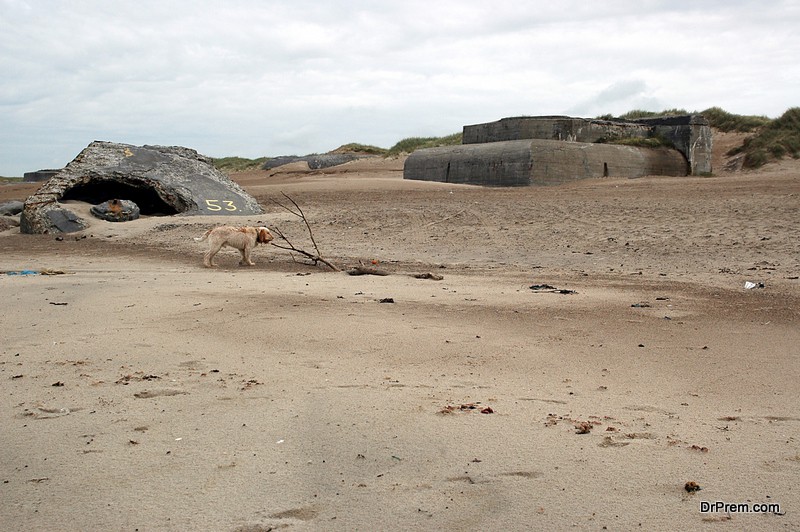
Germany and World War II seems inseparable appendage of a common entity. The Germans have been in the business of marketing war tourism with a touch of class, culture and modernity in a single nostalgic package. Cities like Berlin and Dresden and Hitler’s bunker and heavy bombardments have deep military connotations. Battle struck civilization has been preserved intact in their charred and disfigured state amid modernity that the tourist is left spell bound.
To promote war tourism, the Germans have taken cleanliness, tourist safety, modernity and world class infrastructure to the height of excellence. In fact, Germany’s focused and continued war tourism promotional campaign has made it the seventh most visited tourist destination in the world.
Kenya

Among the African nations promoting war tourism, Kenya has taken a firm step ahead in order to make its war sites get a global exposure. Kenya has been forming a partnership with the stakeholders for promoting investment in the sector of war tourism so that it can see a bright future.
Kenyan battlefields have had an exposure to both the world wars, and in fact have preserved meticulously the artifacts and relics relating to world wars for public display. War fields exist where the soldiers from a number of nations fought and so do the graveyards where the deceased soldiers’ bones rest in peace.
The Kenyan ministry of tourism has been making contact with overseas nations like Great Britain, Germany and Italy firing their passion so that the descendants of soldiers who fought those battles are invited to explore the battlegrounds where their ancestors laid their lives fighting!
South Africa
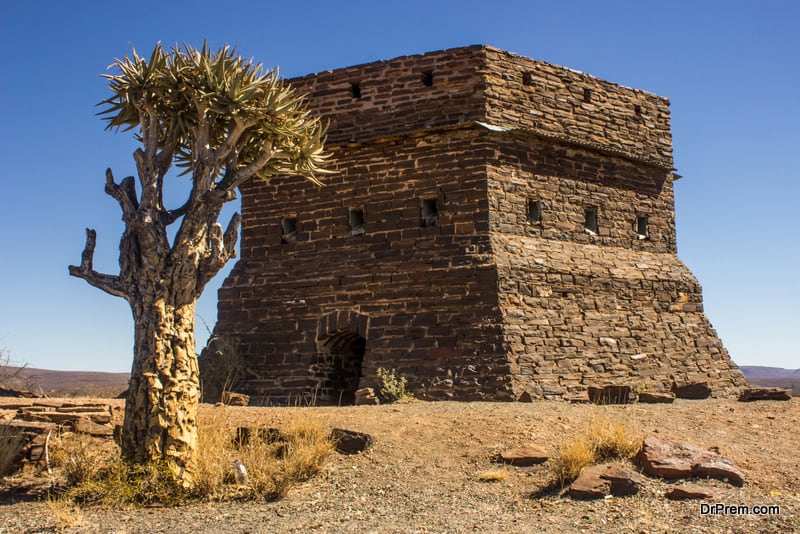
Much like the Kenyan war tourism promotional policy, South Africa is all set to market its battle field wealth and show case Boer war in the global war tourism market. The idea is to form an investment-oriented consortium with overseas partners, specially the nations directly involved in Boer war. The added features that South Africa wants to capitalize are on its breathtaking landscapes and world class infrastructural set up.
Vietnam

The war tourism episode remains incomplete without a mention of Vietnam adding the much-needed fuel to the flame of warfare. The bomb pits have been converted into fish ponds. The stench of napalm exist no more, the air has turned calm and clean, the shell blasted countryside has acres of land under rice cultivation.
The land that once wailed under the crushing weight of tanks have now been witnessing a peaceful country lad making his way through the serene country side mounted on a water buffalo perhaps! The pain and suffering have gone and intelligently the aftermath of the Yankee Viet war has been employed to mint squillions of dollars flowing in from the tourists’ wallet.
Vietnam was quick to recognize its enormous tourist potential from the killing fields showcasing the relics of guerilla warfare methods, trenches, weapons and ammunitions to the western eye. It has been successful in promoting its war sites.
No bad feelings, no hatred or hostility exist but the Vietnamese are very warm and friendly hosts. A substantial number of the French, Americans, and Japanese and German nationals visit the Vietnam’s infamous killing fields every year. A commendable tour promotional exercise!
Top 10 War Tourism Destinations Across the Globe
Spots famous for war tourism are scattered across the globe. They offer a varied spectrum of view and land topography. Some are located in the fringes where borders between warring nations meet. Some are located in the deserts and similar barren terrain and others are located right amid cities and towns where human settlement is the focus of assault.
Majuba Hills, South Africa
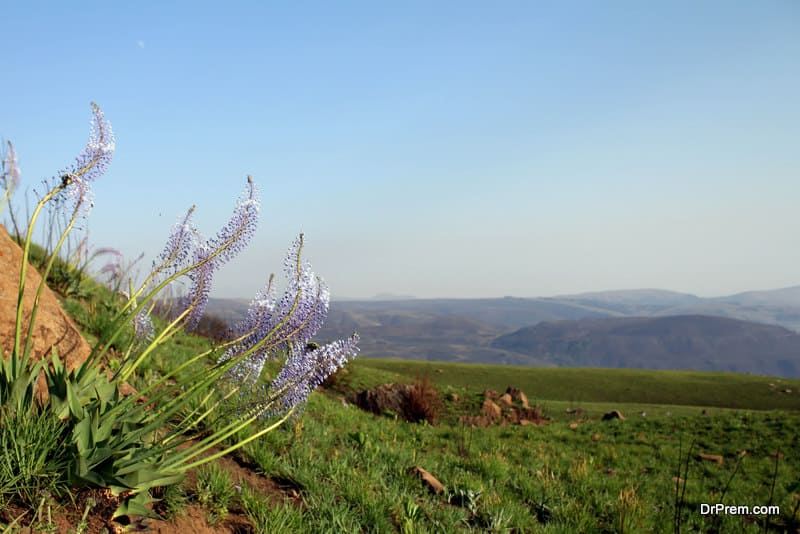
This is the legendary site where the first Anglo Boer war was fought back in 1881. This place is situated close to the town of Volksrust in Kuazulu Natal and is a couple of hours drive from Johannesburg.
Majuba Hills is chiefly remembered for a major British military folly that resulted in heavy loss of British troops. It is however a great tourist locale. Majuba summit is picturesque. From the south summit the town of Ingogo is visible, which is a spot where the movie ‘Zulu’ was shot.
Fort Sumter National Monument, Charleston, South Carolina

The US Civil war started here in April 1861. The battle was fierce and the Confederate artillery launched an assault on the Federal fort. After almost one and half a day’s continuous battle Sumter’s Union defenders were subjugated and two of the soldiers belonging to Northern rank fell and kissed the dust. This place is a favorite among war tourism buffs.
Manassas National Battlefield Park, Virginia:
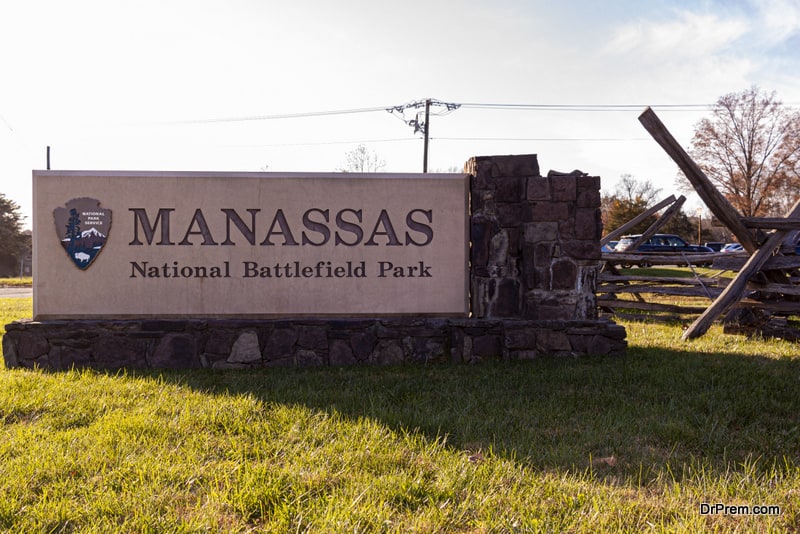
This is another among the famous American civil war sites. Fresh recruits burning with patriotic zeal clashed with a heavy loss suffered by both sides. The battle of Manassas concluded in July 1861 when the Federal troops moved to Shiloh. It is one of the most bloodied American civil wars fought in the Mississippi valley and till date it draws tourists in large numbers.
Crimean Battlefields

The Crimean Peninsula is located in the Eastern Europe to the west of Caspian Sea. The Crimean rustic regions are breathtaking. It is here the famous battle in 1850’s was fought and is a great tourist attraction. The epic ‘charge of the light Brigade’ occurred here where the ‘thin red line’ stands.
The serene Balaclava harbor and valley is here to fascinate you. The distant Alma hills are magnificent. There is more to it. The Black Sea fleet museum, the heights of Inker man, the awe-inspiring palaces of Yalta and the astounding vistas of the siege would make you feel this war tourism site is too good to be true!
Dresden, Germany

This is one city that saw the horrific ravages of World War II and has earned the first place of being the most bombed city in history suffering combined air raids by the British American allied troops. For renovation and repair of the damages, six years of thorough construction work was carried out, and the tourists would be stunned to see the appealing architecture in the background of its rich military history and destruction suffered. Dresden is a noted war tourism attraction.
War fields of Vietnam
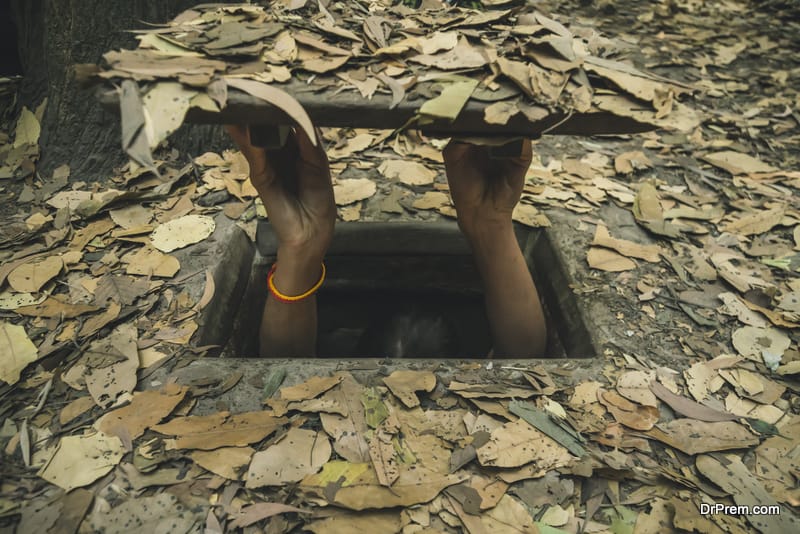
The war fields of Vietnam are a great tourist attraction and according to local myth many land mines still lie sleeping beneath the ground unexploded ready to flare up on accidental touch! But the nightmare of war did not take a grip on the Viet population for they are warm and friendly to the visiting tourists. The changes are in progress. The bomb craters have been turned into sweet water ponds harvesting fishes, prawns and crabs to be cooked and served at restaurants.
Military tour attractions are multifarious. The trenches dug by the Viet Cong guerillas form a complicated labyrinth of 250 km across Ho Chi Minh City is a definite tourist attraction. The no man’s land lying in the borderline between the North and South Vietnam was supposed to be a zone with the highest density of army deployment and indeed a place worth of war trips.
Afghan War fields

A note of caution needs to be put here at the very beginning that as a war tourism destination Afghanistan is highly threatening due to the nonstop clash between the Government troops and Taliban rebels. A tourist trapped in a cross fire may well get killed!! A larger portion of this rugged and mountain locked country is beyond government control.
The safety tips instructed by the travel guides need to be followed with a religious precision. The itinerary must be carefully planned and the latest updates on security conditions must be at the tourist’s fingertips during their span of stay in this country. Yet the beauty of the huge snow-clad western Himalayan Mountain peaks will hold you spell bound!
Libya, North Africa
Libya had been a fierce battle ground during 1941 and 1942 when the Allied forces took over their adversaries, the Axis during World War II. The north eastern part of Libya was a war zone furnace with continuous explosions and gun rattles where the famous battles of Tubruk, Ghazala, Bardia, Sidi Rezegh and Bir Hakeim were fought! Land mines and explosives left behind by the warring nations are still a threat! Chief attractions include the Rommel’s underground trench and wreckage of arms and equipments used in World War II. Other tourist puller sites include the German and French cemetery where the victims of the battle rest in peace.
Korean War memorial and museum, Seoul

In the history of conflict between Asian nations, Korean War finds an important place. To remember this blood bathed strife the Korean War memorial and museum have been erected. It is a big tourist attraction.
It exhibits the memoirs, relics and texts on all important battles fought throughout Korea in a chronological sequence. War equipments, gadgets, arms and vehicles like tanks, aircrafts and submarines are on display. The museum is big enough with a trove of weapons collection that is going to enchant you.
Waterloo, Belgium
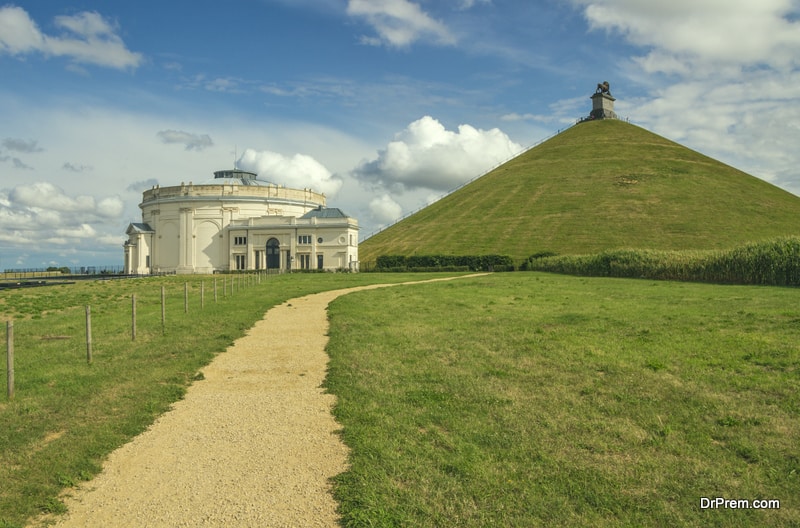
This is the infamous location south of Brussels where in 1815 the French General Napoleon Bonaparte fought a battle against seven coalition nations and suffered defeat. The phrase goes like ‘Napoleon meets his Waterloo’.
Waterloo at the time when the battle was fought was situated in the Netherlands and the coalition victory was a hard enough blow to the French side. There is a fascinating battle museum having souvenirs, arms and engravings on display for the public.
6 Ways to Explore War Tourism in India
Before dark tourism, there was war tourism. This type of tourism thrives on the historic war and battlefield spaces around the world. War tourism co-exists with the dark tourism in countries like Germany, Japan, Iraq, and Syria as one of the most coveted ways to generate revenue. And when you think about it, war tourism in India isn’t much behind. For the eccentric tourist in you, here are 6 war and military tourism destinations in India.
Kohima War Cemetery
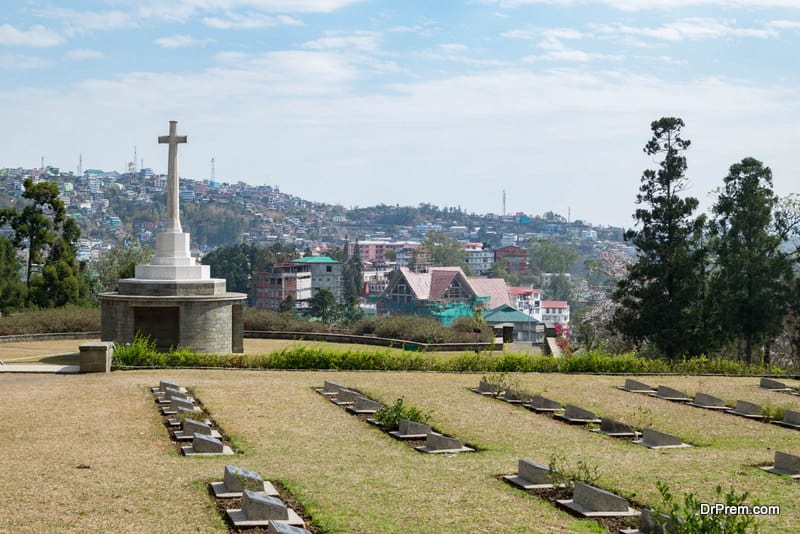
A top Garrison Hill in Nagaland, stands a testament to courage and bravery. Kohima War Cemetery occupies that space of land where the British and the Indians fought against the Japanese in the Second World War. On this land are numerous headstones, with inscription in English, Devnagri and even Arabic, the final resting place for more than 1400 army men from the Allied Forces, along with thousands of unmarked graves inside which the Japanese soldiers lay buried.
No part of this cemetery is untouched by the cruelty of war. Even the trees which now shelter the chirping birds were once used by the snipers of both the sides to attack each other. Kohima War Cemetery is one of the best destinations for war tourism in India. If you plan to embark on an adventurous trip to the North Eastern states of the country, don’t forget to place this grueling memory of war on your itinerary.
Veer Yatra

The Maharashtra Ex-Service Co-operation, also known as MESCO, has launched a nationwide military tour for Indian civilians. Their aim is to connect the common man of India to the Indian military, thereby breathing life into the achievements of the Indian Army, Navy and the Air Force.
If you plan a full- fledged trip to all the military tourism destinations in India, this is the right place to start from. Veer Yatra will cover all the military colleges, museums, memorials, and camps – all of which will highlight the contribution of the Indian military to the country (right from 1857’s War of Independence).
This trip will take you to army bases, defense centres, army hospitals, military hospitals and much more. And for the avid Army admirer in you, this trip will also take you to the Indo-Pak and Indo-China borders. Moreover, you will also be taught war survival techniques. Just go for it if you get the chance. It might change your life forever.
Tawang War Memorial – one of the most spine chilling destinations for war tourism in India
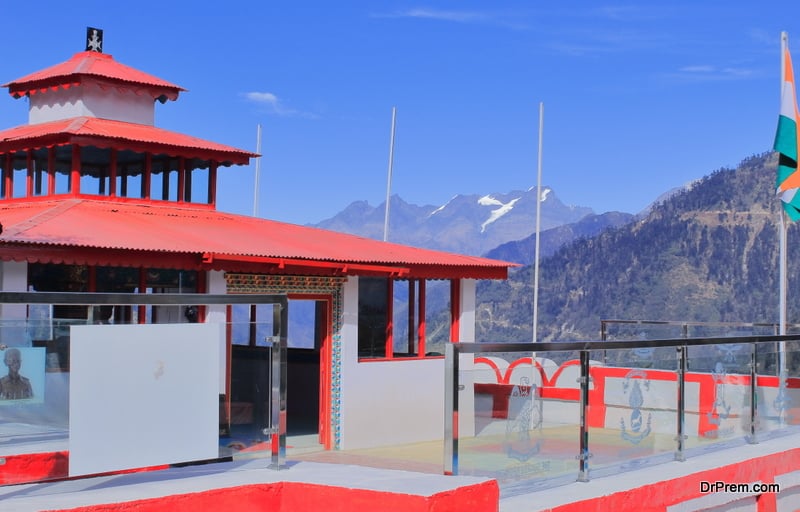
In Arunachal Pradesh, this war memorial is called Namgyal Chortan. More than 40 feet tall, one of the best war memorials stands among the snowy mountains. This is the spot where the Sino-Indian war of 1962 took place. Tawang War Memorial is a strong and ever-lasting tribute to those who laid down their lives in 1962 for India. More than 2400 fallen soldiers’ names are engraved in gold on more than 30 granite plaques.Tawang War Memorial is not just one of the most remarkable war memorials, but it is also a shining example of military tourism in India. If you are a fan of the Indian Army, a visit to this destination is a must for you.
Victory at Sea Memorial
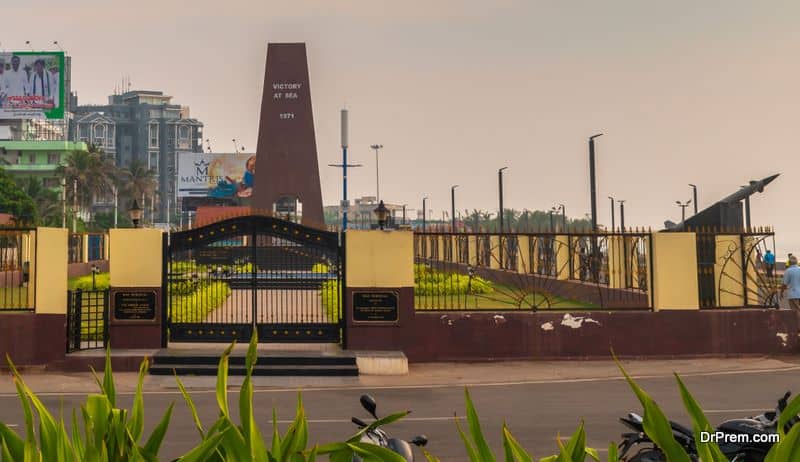
If you have seen a movie titled ‘The Ghazi Attack’, you are in for a pleasant surprise here. At Vizag, this memorial was built in 1996 to honor the martyrs of the 1971 submarine battle between India and Pakistan.
Head over to the Ramakrishna Beach, located in proximity to the Submarine Museum. For the Indian Navy admirer in you, this museum and the beach is filled with submarine artefacts, a T-55 Tank and a fighter plane – symbols of India’s prowess over land, water, and air. This is one of the best destinations for military tourism. And even for the uninitiated, this tourist spot is sure to incite goosebumps.
Tanot Mata Temple, Longewala

This temple, situated in Longewala where the Indo-Pakistan 1971 War was fought, is an evidence of how the victory only belongs to the righteous. Legend goes that Pakistan dropped more than 1000 bombs in the vicinity of the temple or even inside the temple. But none of these bombs exploded, thereby protecting those soldiers who took shelter in the house of Goddess Tanot Mata.
If you are visiting Rajasthan anytime soon, head 150 kms away Jaisalmer and land up at Longewala. This temple, one of the best spots for war tourism in India, is proof that faith and courage can conquer even the worst adversity. And for the Army lovers, roaming around this ‘divine’ site will certainly deepen their understanding of the 1971 War.
Jaisalmer War Museum

If you are at Jaisalmer anyway, do not forget to pay a visit to the Jaisalmer War Museum. Located on the Jodhpur-Jaisalmer highway, this museum is a tribute by the Indian Army to those who became the martyrs of 1965 and 1971 Wars. Guns, tanks, military vehicles and war trophies fill up every inch of this military tourism spot. A souvenir shop inside the museum means that you won’t leave from the museum empty-handed.
Experience what it is like to fight in a battle with conviction and courage by spending some time in the information halls and the audio-visual rooms. One of the best war tourism destinations in the world, this museum is an internationally recognized war memorial that continues to make Indians proud of their military strength every single day.
Let us admit the fact that war tourism in India isn’t as developed as it is in other countries. But let us also accept the fact that there is no dearth for war tourism destinations in India that one can visit whenever they wish to. Take your pick, pack your bags, and head to your preferred war destination. You never know, standing on the spot where blood was shed and courage was displayed, when your life might forever. This is truly an experience like none else. So grab it , embrace it, and enjoy it. You will not be disappointed.


